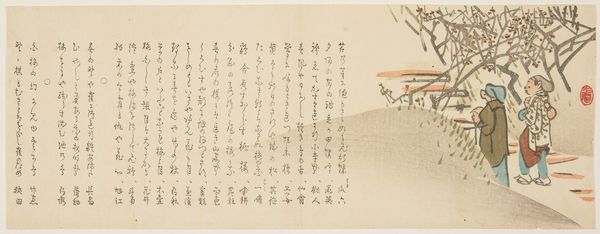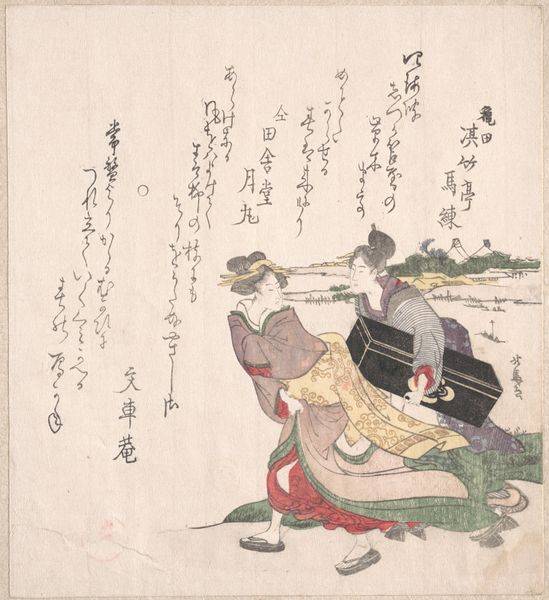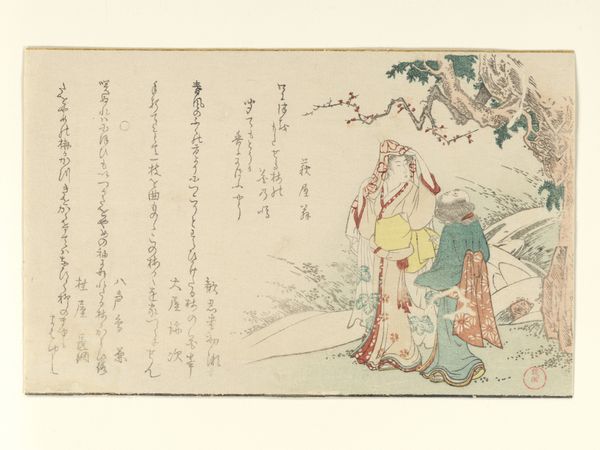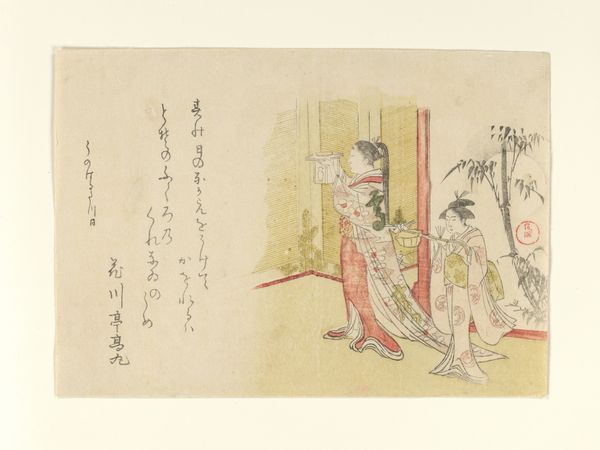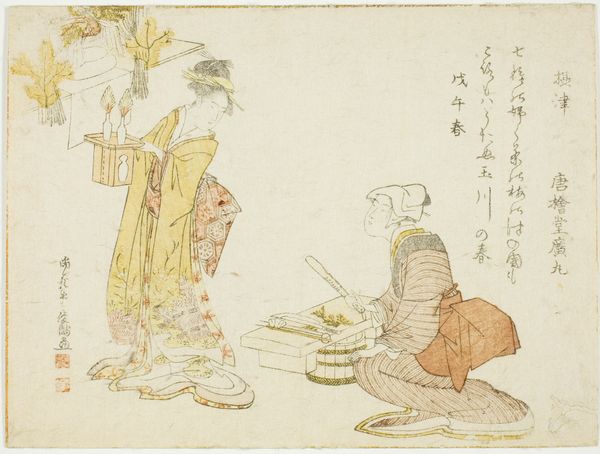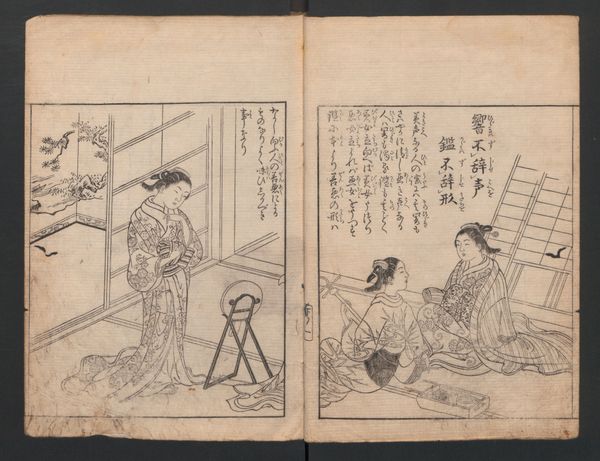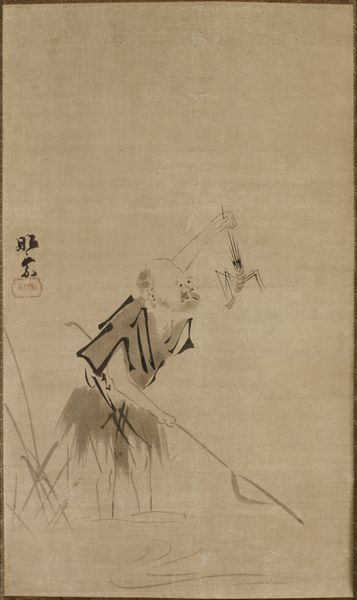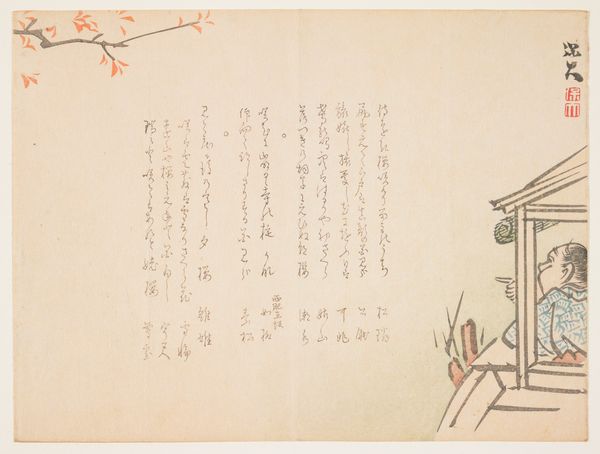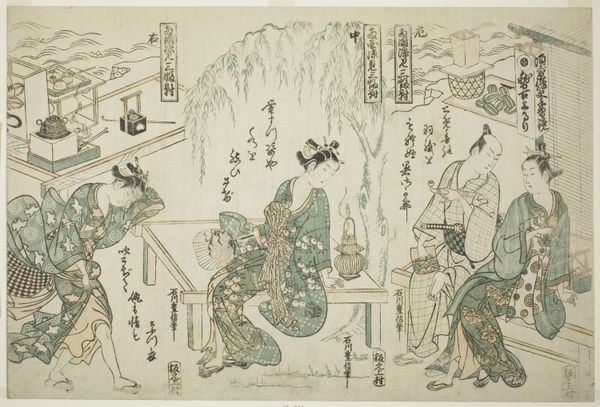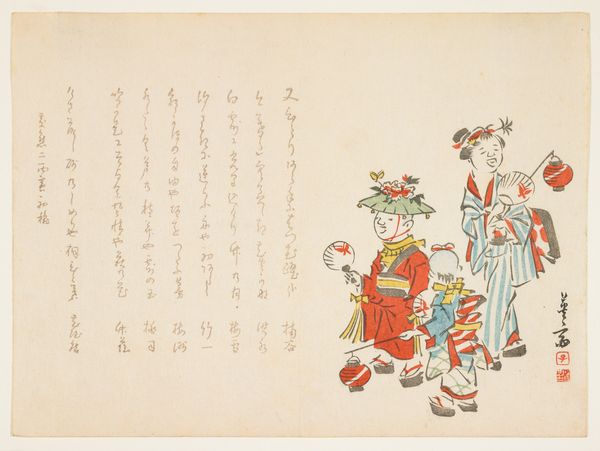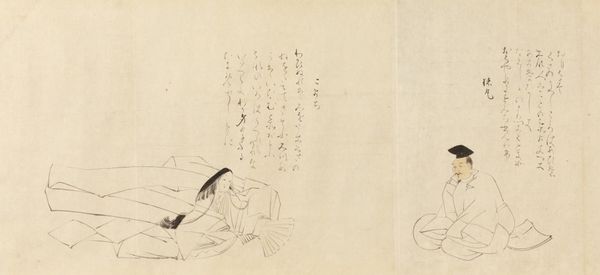
Composing One Thousand Poems in a Day (Kakinomoto no Hitomaro and demon) c. 18th century
0:00
0:00
drawing, paper, ink-on-paper, hanging-scroll, ink
#
portrait
#
drawing
#
narrative-art
#
pen sketch
#
asian-art
#
ukiyo-e
#
japan
#
figuration
#
paper
#
ink-on-paper
#
hanging-scroll
#
ink
#
line
#
calligraphy
Dimensions: 10 5/16 × 18 1/2 in. (26.19 × 46.99 cm) (image)44 1/2 × 19 5/8 in. (113.03 × 49.85 cm) (mount, without roller)
Copyright: Public Domain
Curator: On display we have "Composing One Thousand Poems in a Day (Kakinomoto no Hitomaro and demon)", an ink-on-paper hanging scroll attributed to Tachibana Gitoku, dating from the 18th century. Editor: What strikes me immediately is its graphic simplicity, its linework – incredibly minimal, yet so suggestive. The stark contrast of the ink on paper certainly adds to its directness. Curator: The piece depicts the famed poet Kakinomoto no Hitomaro with an oni, or demon, who legend says helped him compose poetry. What resonates for me is the implication of creative genius as something aided by unseen forces. It hints at the source of inspiration as something beyond our rational minds, maybe even something a bit chaotic or…demonic. Editor: Yes, the positioning, with Hitomaro seated formally, and the demon crouched almost subserviently, establishes an interesting power dynamic through placement alone. And the use of negative space gives the scene an almost surreal, timeless quality. Curator: Hitomaro became a kind of symbol himself. During the Edo period, he was canonized as a poetry deity and often featured in portraits for calligraphy schools. To display his image was almost an appeal for poetic inspiration from beyond. Editor: Right, and we see this almost comical, exaggerated caricature – the high forehead, the large nose – contributing to the sense of otherworldly assistance. The artist’s economy of line truly amplifies the figures' expressions and inherent character, wouldn't you say? The penstrokes alone carry the symbolic weight. Curator: Absolutely. The work becomes a commentary on how we choose to represent genius and the relationship between creative brilliance and perceived external influence, echoing those Japanese folklore archetypes. Editor: And the tension of that dynamic is caught exquisitely in those simple strokes. Curator: Reflecting on it now, it suggests there is no true creation without inner turmoil and external, unseen catalysts. Editor: For me, the beauty lies in the artist’s command of the medium—ink and paper distilled to convey so much narrative complexity with such remarkable economy.
Comments
No comments
Be the first to comment and join the conversation on the ultimate creative platform.
